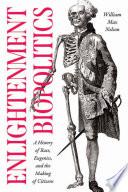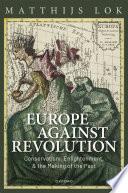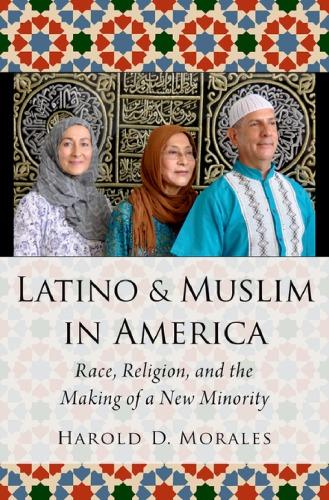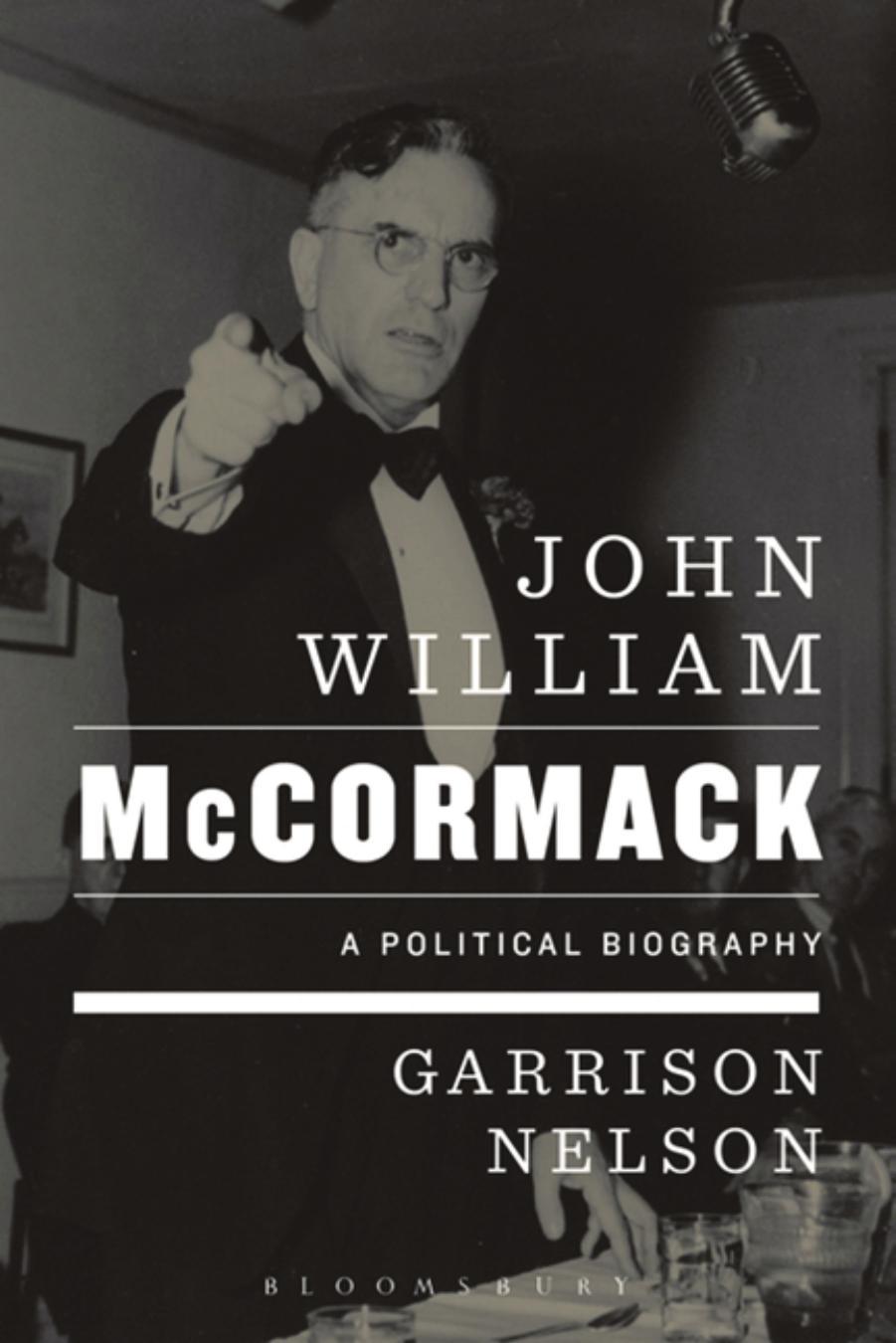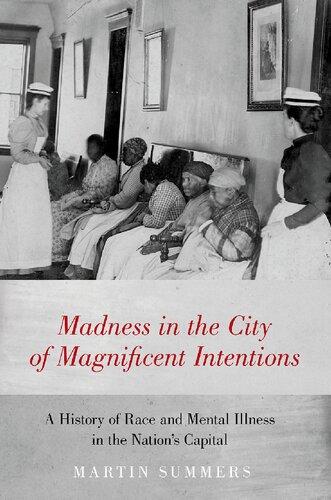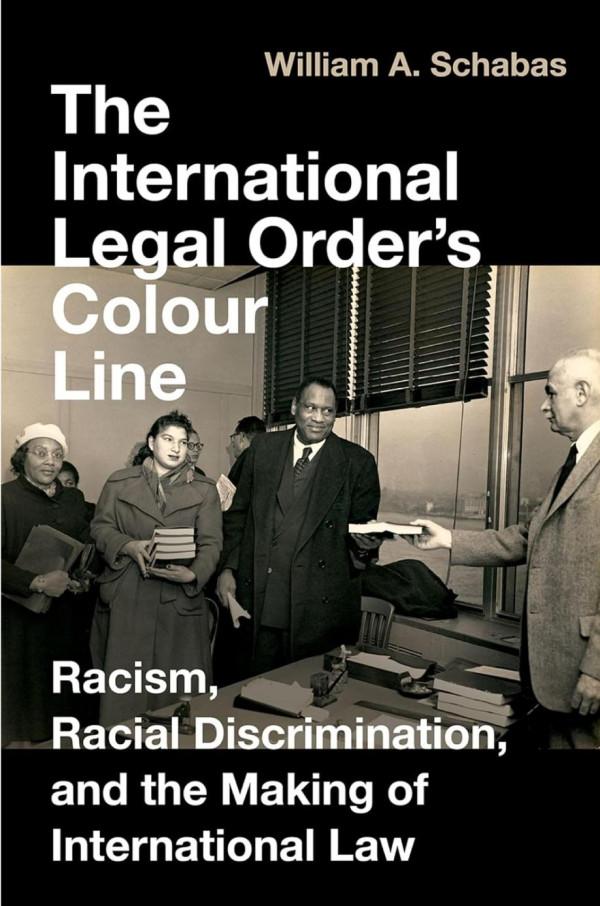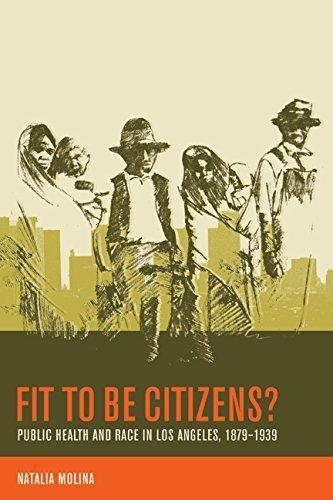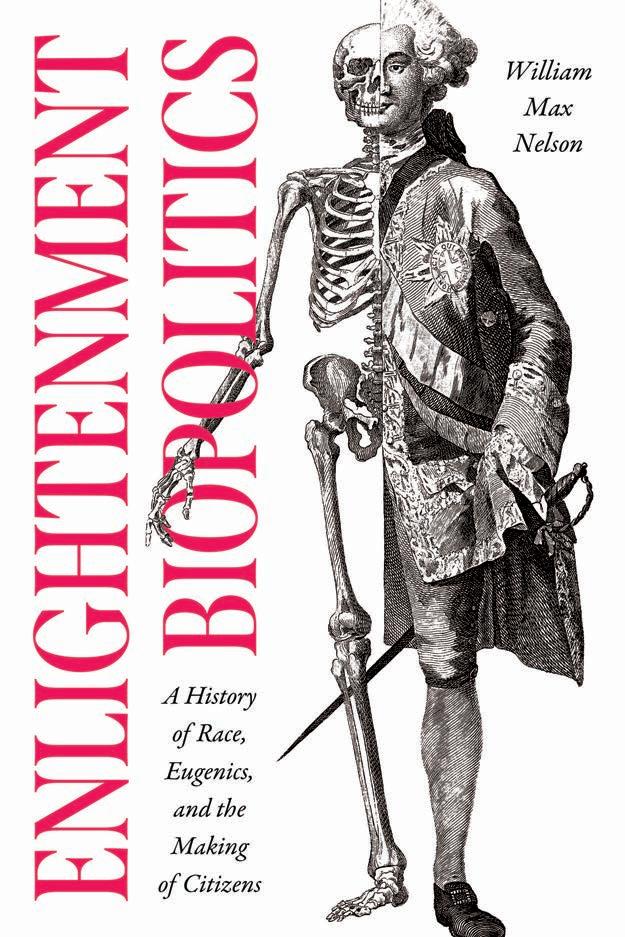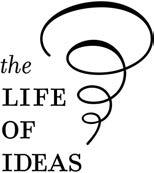Becoming Biopolitics
At some point in the last decades of the eighteenth century— possibly before he became one of the most important political thinkers of the French Revolution—a man put pen to paper outlining a plan to create, as he wrote, “a species between men and animals, a species capable of serving man for consumption and production.”1 This document— one of the strangest and most troubling fruits of the Enlightenment—went on to envision that “new races of anthropomorphic monkeys become your slaves.”2 The document’s author, Abbé Emmanuel-Joseph Sieyès, made clear that “however extraordinary, however immoral this idea may appear at first glance, I have contemplated it at length.”3 Though it may seem surprising, there is nothing in the document, nor in the body of his writing, published or unpublished, that indicates he was being ironic or that his vision of anthropomorphic slaves was satire in the manner of Voltaire or Jonathan Swift.4 In fact, based on Sieyès’s body of work and an analysis of the scientific and political context, it appears that he truly believed the ideas expressed in this document.5 He seems to have thought that these new slaves were the best means to reconcile the tension that existed between the educated citizens (those who could actively participate in politics and direct the work of manual labors) and the vast majority of people, whom he called the “human instruments of production,” the simple “laborers who have only passive force.”6
Sieyès believed that his plan could resolve this tension between active citizens and passive laborers, at once solving political economic problems of production and the problem of political participation by creating a new slave labor force of “a species that would have fewer needs and be less apt to excite human compassion.”7 It was as if Sieyès believed he had found a biological means of producing what Aristotle had called “natural slaves,” people who were supposedly fit for slavery by their nature and, therefore, justifiably enslaved. Even more astounding is that he saw these new subjects as a means to facilitate democratic inclusion, since manual laborers burdened by an excess of work and a paucity of opportunities for improvement
would be freed up so that they could be educated and made capable of active citizenship.8 The fact that this proposal may appear to modern readers to be more like bizarre science fiction than something by a leading theorist of the French Revolution— one who had deeply engaged with Enlightenment thought—helps reveal how estranged we are from the emergence of biopolitics in the eighteenth century. It also suggests how much we can still learn about the Enlightenment and the Age of Revolutions.
When it emerged, biopolitics was more than population statistics, mortality tables, and public health matters. Building on Foucault, but revising his emphasis on the generative importance of these latter concerns, I argue that biopolitics emerged as eugenic plans and new ways of dividing up the population. Foucault characterized the emergence of biopolitics in the eighteenth century as “the entry of life into history, that is, the entry of phenomena peculiar to the life of the human species into the order of knowledge and power, into the spheres of political techniques.”9 I argue that life entered the sphere of political techniques through the concern with the qualities of individual and collective bodies and the conviction that it was possible to transform and improve these qualities. This focus on quality, as opposed to quantity, came to define biopolitics and differentiate it from more mechanistic approaches to studying population in the mercantilist political economy and political arithmetic that developed in the late seventeenth century and continued in the eighteenth century.10
This first took shape in France and its colonies in the second half of the eighteenth century as new understandings of nature and human bodies provided opportunities to address the perceived degeneration of the quality of the French population. Drawing on a new philosophy of vital materialism, some thinkers responded to the social and political context of the Old Regime and the French colonial empire by offering radical visions of the transformation of individual bodies and the population as a whole. Their ideas and proposals intertwined the biological and the political in new ways, making available new solutions to old social, political, and economic problems. The biological came to appear as a powerful, and sometimes necessary, means of affecting the political, and vice versa. But more than this, the biological and the political grew together until there was a reciprocal incorporation of the two of them in a way that resulted in ideas and practices that were not merely biological or political, but biopolitical.11
Throughout the book I use the term “biopolitics” to refer to the general constellation of interrelated ideas and practices of knowing, managing, fostering, and transforming the biological life of individuals and populations.12 As it emerged, biopolitics was defined by two related procedures. The first one aimed to exclude groups of people from the collective body (whether
conceived of as a social, political, or species body). The second aimed to transform the bodies of the individuals remaining within the collective body. This created two distinct, though related, strains of Enlightenment biopolitics that I identify for the purposes of clarity and convenience as “exclusion” and “breeding.” Proposals of specific actions and administrative measures first emerged from these two strains, as opposed to the still rudimentary and haphazard attempts to gather and analyze vital statistics (such as birth and death rates), population statistics (such as the number of inhabitants of a territory or kingdom), and investigate the causes of epidemic and endemic diseases.13 I focus, therefore, on these more activist and interventionist elements in the larger constellation of biopolitics, analyzing how these practices became conceivable and how they were first conceived.
Focusing on the emergence of these two strains helps gives a new perspective on the Enlightenment by elucidating how ideas of race, eugenics, and forms of exclusionary thought emerged along with inclusionary Enlightenment ideas of liberty, equality, rights, and reason. The coexistence of good and bad, emancipatory and discriminatory, is most commonly discussed in the contemporary scholarship of the Enlightenment in the analysis of ideas of race and slavery. The record is very clear: many Enlightenment thinkers wrote demeaning things about what they claimed to be the limited capacities and general inferiority of some racial and ethnic groups, particularly some of the peoples of Africa, the Americas, and the Arctic. It is widely recognized now that while central figures of the Enlightenment held some views that by today’s standards might seem socially and politically progressive, they also expressed racial prejudice, sometimes even denying people of African and Arctic origins the status of being fully human.14 This is true of “lesser lights” as well as luminaries such as John Locke, Voltaire, David Hume, Thomas Jefferson, and Immanuel Kant.15 The record of philosophes endorsing the idea of a natural equality between men and women is perhaps even worse, with true egalitarians in this regard being extremely rare.16 When scholars bring up the coexistence of emancipatory ideas and racial prejudice in the Enlightenment, the contradictory nature of these ideas is rightly emphasized.17 But representing them as only logically and morally contradictory can obscure the way these ideas often stemmed from the same cluster of fundamental principles, concepts, and assumptions. It also obscures the fact that they developed in a complicated dialectic. The two poles that appear to be logically and morally contradictory often stemmed from the same historical and conceptual sources, reinforcing one another and pushing one another forward. The Enlightenment is not alone in demonstrating a paradox of this sort, but it was in the Enlightenment that
inclusion and exclusion were heightened and interconnected in a way that first gave them a modern form.18 The Enlightenment took on a particular shape because of the specific ideas of equality and inequality and the arguments for specific inclusions and exclusions.
More than just a dialectic or “co-occurrence” of inclusion and exclusion, the Enlightenment was characterized by the formation of new conceptual and practical foundations on which modern inclusions and exclusions were built.19 This was nothing less than a shift in conceptual and practical conditions of possibility in the second half of the eighteenth century. A focus on this shift and the emergence of biopolitics reveals that a number of ideas and practices that are strongly associated with later time periods actually emerged in the eighteenth century. Furthermore, the conceptual and practical foundations of biopolitics in the Enlightenment, the formation of ideas of inclusion and exclusion on them, and their implementation and reformulation across subsequent centuries had great consequences for vast numbers of people, not just in Europe, but throughout the world, as European social and political ideas were adapted and translated, ramified and transformed, hybridized and appropriated, and in many cases imposed through imperial and colonial regimes, providing a bedrock for universalist emancipatory movements at the same time as they smuggled in and instantiated inequalities, exclusions, and qualifications to the professed principles of universalism. For this reason, I begin my narrative around 1750 and continue through the French Revolution, rather than starting with the Revolution and presenting its reimagining and contestation of citizenship, sovereignty, rights, and the idea of the nation as the birth of modernity.
“If it is good to know how to use men as they are,” Jean-Jacques Rousseau wrote in 1755 in an entry on political economy in the Encyclopédie, “it is better still to make them into what one needs them to be.”20 Examples throughout this book demonstrate that many of Rousseau’s contemporaries and immediate successors, such as Abbé Sieyès, agreed with him and that they envisioned this process of transforming people to be a question not only of education, moral formation, or the cultivation of civic virtue (as in the traditions of Lockean improvement or classical republicanism), but of the physical transformation of individual bodies and collective bodies. In order to defamiliarize the story of biopolitics and the history of the Enlightenment, opening up the space in which to write a new history, I want to turn back to the strange vision of Sieyès. As bizarre as this brief and little-known archival document seems, perhaps the strangest thing about it is that it reflects many of the characteristics of the biopolitical thoughts and practices that first emerged in the eighteenth century and came to play
a central role in the modern world. Analyzing Sieyès’s proposal provides an opportunity to highlight several key characteristics of biopolitics as it took shape in the eighteenth century, which allows me to flesh out the general concept of biopolitics while also being more specific about what precisely its Enlightenment version entailed.
Chief among these representative characteristics is the fact that the plans were dramatically interventionist from the very birth of biopolitics.21 For people to envision radically transforming human populations did not take until the development of the eugenics in the late nineteenth century, the global implementation of eugenic policies in the twentieth century, the horrendous employment of biopolitical projects under the Nazis, or genetic engineering facilitated by the development of molecular biology and technological advances in the late twentieth century.22 Biopolitical thinkers in the eighteenth century were already proposing the massive transformation of large populations, as well as extreme transformations of individual human bodies.
Sieyès’s plan also represents how biopolitics, from its emergence, aimed at recreating collective bodies through the linked processes of inclusion and exclusion. The creation of the new slaves is a particularly clear example of this link, since it was the creation of the slaves and their placement outside of the political body that was supposed to make it possible for many more people to be newly included as active members. By breeding humans with a variety of nonhuman primates, Sieyè s envisioned producing three new intermediary species that would lift much of the labor burden off of manual laborers and domestic servants, enabling working people to receive an education and prepare for active political participation. Those in the first group of these new slaves would be large and strong, bred for manual labor. They would range in height from six to eight feet, being twice the size of those in the second group, who at only three to four feet would be created for domestic duties. The last group, of twelve to fifteen-inch anthropomorphic monkeys, would also be tasked with light domestic work “and amusement.”23 In Sieyès’s vision, the promise of democratic inclusion seemed to rest on the creation of half-human slaves that would be excluded from the polity. The excluded anthropomorphic slaves were not, however, only a condition of possibility for the inclusion of more people as active citizens. Their existence and abjection was meant to play a vivifying role in the life of the collective; in this case, they were meant to contribute the labor that was necessary to meet the basic biological needs of the population, and to enable the body politic to thrive economically and hence to survive as a viable entity.
In another characteristic development, this excluded group was dehu-
manized so as to facilitate and justify their exclusion. In the case of Sieyès’s slaves, the dehumanization was shockingly literal; the enslaved would have been less than fully human because they would have been hybrids of humans and animals. But often, symbolic dehumanization was attempted through implication and the analogical comparison of groups of people with animals. This bestialization of people was clearest in the biopolitical proposals drawing on the nascent theories of race, but they were also found in projects aimed at placing the poor and mobile working population of France into a form of slavery. It was not uncommon, for instance, to characterize so- called vagabonds as harmful swarms of insects or dangerous animals that were inherently violent and antisocial. As Sieyès stated explicitly about his proposed hybrid slaves, their status as less than human would mean that the subjects would be less likely to elicit compassion, and, implicitly, their exclusion from collective life in its social, political, and biological forms would therefore be easier.24
Another characteristic feature of Sieyès’s plan was the intertwining of the life sciences and political economy. Again and again, biopolitical projects aiming at the transformation of collective and individual life were envisioned as solutions to the range of social, political, and economic problems that were within the capacious purview of eighteenth- century political economy. Sieyè s was a careful student of the new political economy that had taken shape in the middle decades of the century, and he was also well acquainted with important new work in the life sciences.25 Like Sieyès, with his vision of a variety of hybrid species bred for labor, several other of the theorists of Enlightenment biopolitics drew on new theories of animal generation and the hybridity of species to propose human breeding programs that would solve specific political economic challenges, whether they were related to ensuring an adequate supply of labor or cultivating the wealth of a nation through the improvement of the quantity and quality of its population. This was sometimes expressed, as in one subtitle, as a “project for enriching and improving the human species.”26
Related to this intertwining of the life sciences and political economy was a more general intertwining of the biological and the political. In the second half of the eighteenth century in France a variety of problems that could be called political (in a broad sense) came to seem as if they were inseparable from the biological. They became entangled in a way that made them integral parts of a new whole. For a number of philosophes and a few government administrators and royal officials, the manipulation of biological life seemed to be a promising means of addressing various problems of the social, political, and economic realms. Sieyès, for instance, thought that the selective breeding of humans with various primates could help to
solve fundamental social, political, and economic problems that resulted from the opposition between those whose lives were consumed by laborer and those who directed the labor of others. In fact, as he stated explicitly in the archival document, he believed this was the only way to resolve these problems. “You will not find other means,” he claimed.27 In addition to the biological providing new possibilities for solving political problems, an understanding of biological life provided a foundation on which many philosophes built their social and political theories. Visions of natural order had long provided foundations for visions of social and political order, but new ideas about the characteristics of nature and living beings created conceptual possibilities that were realized in the ideas and plans of Enlightenment biopolitics.
Another way that Sieyès’s idea represents Enlightenment biopolitics is that it was not utopian in most of the senses in which scholars use this term, nor was it presented ironically or as satire. It might have been impracticable or appeared fantastical, but Sieyès did not propose the plan for some imaginary nonplace (as is the literal meaning of u-topia), nor did he present it as a thought experiment that offered a normative image from which to critique present circumstance.28 It was also not utopian in the sense of envisioning an ideal society. Rather, he believed that it was scientifically possible and that it was politically and socially necessary. In terms of its morality (or immorality) and imagination, it is related to a group of “dangerous experiments” carried out in the eighteenth century (such as the public demonstrations of mass electrocution) and unrealized proposals for inhumane experiments (such as the vivisection of criminals, or the stranding of isolated children in uninhabited places), though it is important to recognize that the biopolitical proposals that I analyze were not just thought experiments or fictional proposals for some nonplace.29 Most of them were proposals for specific actions to occur in specific places.
Sieyès’s consideration of enslaved labor in the colonies was yet another representative feature of Enlightenment biopolitics. Slavery and colonialism often played an important role in the logic of biopolitical ideas and in the historical development of biopolitical practices. In fact, the role was so significant that the emergence of biopolitics cannot be adequately understood without considering both metropolitan France and the French colonies, particularly those in the Atlantic world, since biopolitics emerged, in part, out of the movement of people, practices, and ideas between France and its Atlantic colonies. The colonies were sites where a number of biopolitical theorists built proposals on the colonial precedents of controlling the lives of enslaved people, paying special attention to the questions of surveillance and working with new scientific ideas from the metropole to
reimagine features of colonial life while reentrenching slavery as an institution. Often these proposals built on nascent scientific ideas of race, occasionally even envisioning racial engineering as a fundamental tool for reforming and securing the colonies.30
Although it was grounded in new scientific and philosophical ideas, the biopolitics that took shape in the eighteenth century incorporated many preexisting policies and administrative tools while responding to several historical problems, economic developments, and social challenges. There were, in fact, ancient precedents for numerous aspects of modern biopolitics. These ranged from the idea that animal breeding could act as a model for human breeding, protoeugenic ideas such as those expressed by Plato for the ideal polity in The Republic, and a wide variety of pronatalist policies and laws created by the ancient Romans. Although some of these precedents were explicitly evoked in the seventeenth and eighteenth centuries, particularly the Roman natalist policies, the biopolitics that emerged in the second half of the eighteenth century differed in important ways largely because of the general transformation of ideas about nature, vital materialist theories of the bodily “organization” of living beings, and the new understanding of human reproduction and human variation that developed in the Enlightenment.31 A new view of human beings and their relationship to the rest of nature brought a biological character to modern biopolitics that was absent from earlier ideas and practices. Although the term “biology” was not used to refer to a unified science of life until around 1800, some Enlightenment figures working in natural history and the life sciences had already developed an orientation that can properly be characterized as biological.32 This orientation was absent from earlier approaches to populations, whether in antiquity or in the early modern era.33 For example, unlike the eighteenth- century proposals for the selective breeding of human beings, the late seventeenth-century policy of encouraging intermarriage as a means to assimilate and “Frenchify” (franciser) the native peoples of New France was motivated by religious, social, and political concerns, not biological ones. Those advocating the mixing of peoples hoped to create social and familial bonds that could help facilitate religious conversion and the creation of political alliances.34 The same could be said of the early modern plans of forced migration that the Dutch, Portuguese, and English all hoped would bring about an assimilation of colonial and metropolitan populations through intermarriage.35 The new biopolitics that emerged in the second half of the eighteenth century in France was, therefore, not merely a combination of pronatalism, political arithmetic, and public health practices.36 It is unconventional to refer to ideas and practices of the eighteenth
century as being “eugenic.” The term, building on Greek roots implying a meaning of being well born, was not coined until 1883 by Francis Galton.37 If the concept is invoked at all by scholars to refer to phenomena in the eighteenth century, it is usually qualified as “proto- eugenic” or “pre- eugenic.”38
But in the case of some of the biopolitical ideas and practices that I focus on in this book, this qualification is unnecessary and misleading. Some of them fulfill the fundamental criteria of eugenics, even if contemporaries did not yet have the term available to them to characterize their approach. Like later ideas of eugenics, the eighteenth- century proposals and suggestions were interventionist attempts to transform populations, focused on improvement through reproduction, often involving ideas of race, and concerned with the quantity and the quality of the population. Many of the eighteenth- century ideas envisioned large-scale projects to transform whole populations, or the entire human species, often through plans that were meant to be directed and executed by the state, but not always. They did not have a consistent position on the role of the state or the question of coercion, but neither did the eugenics movements of the twentieth century, which had advocates from all political ideologies, some who argued for coercion and strong state efforts and others emphasizing private initiative, persuasion, and incentives.39
In addition to fulfilling the major elements of the definition of eugenics, eighteenth- century ideas have an even closer conceptual relation to ideas of the nineteenth and twentieth centuries than is often, if at all, recognized. For example, even the idea that characteristics acquired by parents could be passed on to offspring, the main feature of the “Lamarckianism” that provided the theoretical justification and explanation of many nineteenthcentury and twentieth- century eugenics, was already formulated by naturalists in the middle of the eighteenth century.40 Although the concept of “the inheritance of acquired characters” is most associated with the name of the French naturalist Jean-Baptiste Pierre Antoine de Monet, chevalier de Lamarck, the idea was so common when Lamarck began to discuss it in the late eighteenth century that he did not feel compelled to name it or to provide evidence for the phenomenon. He was able to take it for granted that people like the famed naturalist Georges-Louis Leclerc, comte de Buffon, his mentor and patron, had long been discussing the reproductive inheritance of bodily transformations.41 So while some scholars of nineteenthcentury and twentieth- century eugenics argue that the idea of heredity played a central role in characterizing these later ideas and practices, it is important to note that in the second half of the eighteenth century savants began new types of inquiry into the phenomenon of the inheritance of characteristics.42 Although they used the adjective “hereditary,” rather than the
noun “heredity,” they developed new theories of the transmission of characteristics across the generations, arousing widespread interest in questions of generation and the similarity of parents and offspring.43 As Carlos LópezBeltrán, a scholar of the concept of heredity, explains, “a more or less general vision of hereditary transmission was shared by numerous savants of the eighteenth century.”44 These savants explicitly and repeatedly engaged in inquiries into the inheritance of characteristics and the relation of this inheritance to the processes of animal generation, human reproduction, and variation within the human species. In fact, some of the savants who were central to formulating the scientific ideas on which biopolitical plans were built—figures such as Buffon and Maupertuis—were among the most important to carry out experiments on hereditary transmission, popularize them in writing, and propose mechanisms that could account for reproduction and the inheritance of characteristics.45
An additional reason why I characterize some of the biopolitical projects envisioned in the eighteenth century as Enlightenment eugenics is that these biopolitical projects were both “positive” and “negative” in the technical sense employed by eugenicists in the twentieth century. There existed “positive eugenics” proposals for the encouragement of the reproduction of specific types of individuals or segments of the population, as well as “negative eugenics” that aimed to limit the reproduction of a segment of the population. Proposals for the selective breeding of human beings and large-scale projects of surveillance and policing that aimed to control the reproduction of segments of the population were the two most comprehensive and extreme forms of biopolitics that I identify in the eighteenth century. While both qualify as eugenic, it is important to recognize that the proposed programs of positive eugenics seem to have remained only proposals, whereas, in at least one case, a program of negative eugenics was implemented. As discussed in chapter 5, the biopolitical ideas of race and intervention in the reproduction of a part of the population developed into an actually implemented, though little enforced, policy of negative eugenics. This occurred in the late 1770s and early 1780s when a royal declaration and a series of legal clarifications established a set of laws and royal directives collectively known as the Police des Noirs. These laws and directives aimed at regulating the small population of African descent in metropolitan France.
Finally, supporting my claim that some Enlightenment ideas qualify as eugenic, it is worth distinguishing between the idea of eugenics and the historical phenomenon of the eugenics movement, which was located in specific times and places, coalescing at the dawn of the twentieth century and reaching its height between the two world wars. I do not argue that
Enlightenment examples of eugenic thought require a new chronology of the eugenics movement, since I do not think that they constituted a “movement.” These Enlightenment ideas were too scattered and inchoate, too disconnected from widespread practices of governance, and they had no large “public” constituency or group of organized advocates. I do argue, however, these Enlightenment ideas of eugenics were clearly and publicly articulated in written works more than a century before Galton coined the term “eugenics.” It is worth drawing attention to the fact that scholars of eugenics who focus on the late nineteenth century and the first half of the twentieth century also write about eugenics existing before Galton’s neologism. In one of the first authoritative histories of eugenics, for example, Daniel Kevles observed that “Galton first published his eugenic ideas in 1865—well before he coined the word himself.”46 Other scholars have pointed to the fact that terms with similar meanings existed in languages other than English before Galton’s coinage, that others had eugenic or “eugenical” ideas before Galton, and that one of the first experiments that could qualify as a systematic eugenic practice of controlled reproduction— what the participants referred to as “stirpiculture”—began in the Oneida community in New York in 1865.47
A number of long-term processes as well as a variety of immediate historical and intellectual conjunctions in the middle of the eighteenth century made the birth of biopolitics possible and helped shape its character. Major longterm processes like secularization, the development of capitalism, and the radical philosophical critique of traditional justifications of social and political order and authority that began in the seventeenth century all played an important role establishing the general conditions in which biopolitics emerged.48 In addition to these very general and long-term processes, there were also four more immediate historical developments that made possible the reformation of a number of ideas and practices into the constellation of biopolitics: the emergence of a new type of dynamic, organic thought that produced new visions of nature and the place of humans within it; new attempts to ground social, political, and economic order in the natural order; an openness to social, administrative, and economic reform from within Old Regime absolutism; and a related, but distinct, openness to reform of the colonial order.49 The combination of all these factors, and their location in France and the French Empire, helps explain why biopolitics emerged there and then.
The first two decades of the second half of the eighteenth century was a particularly intense period in the formation of Enlightenment biopolitics. The publication of the first three volumes of Buffon’s massively influ-
ential Natural History, General and Particular (Histoire naturelle, générale et particulière) in 1749 is an important marker of the new dynamic vision of nature, the place of humans within nature, and the development of a new organic thought.50 The end of the Seven Years’ War in 1763 is an important marker in the establishment of the royal administration’s openness to reform in the metropole and the colonies. This openness to reform and the search for means of countering what was perceived as widespread degeneration within France and its empire was one reason why so many of the people proposing biopolitical programs, particularly those involved in selective breeding, were employed or supported by the royal administration. While I analyze the historical circumstances in more detail in the following chapters, here I want to introduce more fully the most important and wide reaching of the intellectual transformations that made possible the formation of biopolitics. In addition to the development of the concept of organization, there was a more general transformation of the understanding of nature and the practices of natural history.
A new approach to the study of nature emerged from the endeavors of Buffon and a loose group of associates, friends, like-minded naturalists, and scientifically engaged philosophes. Together, from roughly the 1750s to the 1780s, they reconceptualized natural history and transformed its practice from a science that was consumed by extremely detailed observation and the categorization of natural objects, into a wide-reaching philosophical inquiry into the history of nature. This entailed the shift to an understanding of nature as a dynamic whole that was open to historical change and driven by immanent forces, which historians of science, following Phillip Sloan, have referred to as the “Buffonian revolution.” This intellectual and scientific revolution saw ideas of static order and divine foresight replaced by ideas of eternal flux and complex historical development. This developed in tandem with new methodological approaches focusing on the identification of forces operating within nature in an attempt to explain immanent natural causes and to reveal the complex transformations of nature that defied rigid means of ordering, naming, and classifying.51 The new understanding of nature that took shape in the middle of the century had ramifications far beyond the realms of natural history, the life sciences, and natural philosophy more generally.
The place of humans in this vision of nature played an important role in the formation of what became known in the second half of the eighteenth century as the “science of man.” One important characteristic of this science was a new emphasis on understanding human beings as a biological species. That is to say, by roughly the middle of the eighteenth century, humans could be the scientific object of an inquiry into species, and they
were reconceived according to Buffon’s new definition of species as a group of similar individuals genealogically linked through reproduction. The human species became conceptualized as a new type of collective being: an imminent, historical, and dynamic whole, composed of individuals who shared interdependency and autonomy.52 This shift is reflected in French in the second half of the eighteenth century as the naturalistic meaning of “the human species” competed with, and began to displace, the more general term le genre humaine (which can be translated as either “mankind” or “the human race”). This linguistic development appears to have corresponded with the conceptual development by which the unity of humans was rethought in terms of biological species. Both of these developments are evident in eighteenth- century biopolitical writing and related scientific work in natural history, the life sciences, and the science of man. This linguistic and conceptual shift was a part of a larger process through which human collective forms of existence were reimagined across the second half of the eighteenth century, as traditional accounts of natural order and hierarchy were challenged and various entities were reimagined in a way that allowed them to compete with metaphysical conceptions of absolutist political theology (such as the mystical body, the corpus mysticum) and the supposedly natural arrangement of corporate society in a hierarchy of social orders and estates.
New objects of social and political thought emerged, and old objects were rethought, as people began to question the very foundations of social and political order. For most of this process, from roughly 1750 until 1789, people reconceived of collective bodies in a disparate and loose fashion. It was a time of transition, as new ideas were being formed and new relationships imagined. The names “social body,” “society,” “body politic,” “the human species,” “race,” and “population” were still used in inconsistent ways that sometimes overlapped with one another, but that, importantly, began to appear as different aspects, or different parts, of a living collective whole. In other words, they were used as different expressions of collective existence that placed more or less emphasis on social, political, biological, and economic aspects of collective life.53
The coming into being of the human species as an object of scientific knowledge was also a long and complex process that did not have a single decisive development, though an important series of conceptual developments, shifts in method, and syntheses of empirical evidence occurred around the middle of the century.54 A marker of this development was the Swedish naturalist Linnaeus classifying humans among other animal species in his Systema naturae (1735), though the understanding of humans as a species was most influentially expressed and enacted in Buffon’s long anal-
ysis “Varieties of the Human Species” in the third volume of Natural History (1749).55 This work is a striking demonstration of how the Enlightenment formation of the science of man was characterized by the simultaneous assertion of the unity and variety of the human species. At the same time as the similarity of humans was rethought in terms of biological species, new types of biological differences within the species were identified and multiplied. Buffon argued for human unity and common origins without recourse to theological explanation, relying only on naturalistic explanation and a series of mechanisms and forces inherent in nature. At the same time as he formulated this secular theory of monogenesis, he synthesized the observations of bodily difference in the work of travelers, missionaries, and naturalists, creating the longest description and analysis of the “races” of the species to date.56 “Everything therefore comes together to prove that humankind is not composed of essentially different species,” Buffon concluded, “but to the contrary there was originally only a single species of men, which having multiplied and spread across the surface of the earth, underwent different changes by the influence of climate, differences of food, way of life, epidemic illnesses, and by the infinitely varied mixing of individuals more or less alike; that at first these alterations were not so marked and produced only individual varieties; that they then became varieties of the species, because they became more general, more noticeable, and more constant by continued action of these same causes.”57 Building on this foundation, the second half of the eighteenth century proved to be a formative time, in which the biological unity of and the biological differences within the species were thought through together. Unity was reimagined in scientific terms, and differences were located in the body, explained through the theories of the life sciences, and reified in a literature that increasingly took differences of race and sex to be real, embodied, and self- evident.
There were many ramifications of this development for both the breeding and the exclusion strains of Enlightenment biopolitics. Within the breeding strain this meant that the unity of the species (reformulated and turned into an empirical question through Buffon’s assertion of the interfertility criterion) ensured that all varieties of human could reproduce together. This created a new scientific way to understand commonality, while it also theoretically enabled the manipulation of differences through the controlled crossbreeding and selective breeding of humans. It made possible new ideas about eliminating racial differences and homogenizing the species, while it also made possible ideas about reproducing and increasing the differences. It made possible, therefore, both the elimination of racial differences and the creation of more distinct “races.” Its ramifications were profoundly ambivalent, enabling and encouraging proposals for “improvement” through
racial crossing and proposals for breeding out differences, while also enabling and encouraging proposals to make the biological differences associated with race more extreme and therefore more able to reinforce existing social and legal hierarchies or to be harnessed for new social and legal hierarchies. Among the most important ramifications for the exclusionary strain of biopolitics was the manner in which this simultaneous fashioning of unity and variety, sameness and difference, introduced a new biological foundation for social and political thought relating to the conceptual pairs of equality/inequality and inclusion/exclusion. The new conception of the unity and sameness of humans as a biological species provided a foundation to reconceive social and political equality (which in turn grounded new arguments for inclusion) while at the same time variations and biological differences provided a foundation to reconceive social and political inequality (which in turn grounded new arguments for exclusion). As I demonstrate in this book, these possibilities were recognized and realized in biopolitical proposals that drew on the new conception of the human species and its place in the work of the Enlightenment science of man.
In France, the science of man was particularly bold and influential because many of its leading practitioners broke free from theologically based explanations, such as physicotheology, that attempted to demonstrate divine creation and predetermined natural order through empirical evidence. This was one of the primary reasons that biopolitics emerged at this time in France and the French Empire, as opposed to other times and places. French savants, such as Buffon and his friend and intellectual interlocutor Pierre-Louis Maupertuis, were among the most important Enlightenment savants to form naturalistic explanations that avoided recourse to supernatural forces and divine agency in order to explain the characteristics of the natural world. The practitioners of this Enlightenment science of man aimed to find ways to “improve” and “perfect” people, both individually and as a species. They were haunted by a concern that the species was degenerating, and they observed and speculated about the mélange (mixing) or croisement des races (crossing of the races). The creators of biopolitics drew on this same language and wrote of wanting to améliorer (improve) and perfectionner (improve or perfect) people; they were concerned with perfectibilité (perfectibility) and régénération (regeneration), and with making people bien faits (well made), plus grands (larger), and plus robustes (more robust). Repeatedly, they aimed at the species and wrote of “improving the human species.”58
Investigating the birth of biopolitics helps reveal how the coexistence of these ideas took on a particular modern form in the Enlightenment.
Two concepts that can help bring this into focus are what I call the equality of malleability and the paradox of Enlightenment. One of the widely agreed- on features that defined the Enlightenment was the development of a number of arguments about forms of social, political, and natural equality. One form of equality that has not been identified before is a type of physical equality between people. This was not the notion that all bodies were of equal size, strength, or vigor. Instead, it was a new recognition that all bodies were malleable, and equally so. Whether through the effects on the body of food, weather, physical activity, or mental activity, all bodies were prone to be transformed in their very structure and functions. Furthermore, these influences could create permanent, or semipermanent, changes in “organization” of individual bodies, which, crucially, were believed capable of being passed on from parents to children in reproduction, enabling the amplification and acceleration of bodily transformation across the generations and throughout populations. This malleability and transmission of bodily changes meant that individual lineages and whole populations of individuals appeared to be more susceptible to degeneration as well as to improvement.59
For its adherents, the equality of malleability was truly universal. It held true of every human, other than those individuals, perhaps, who fell into the early modern category of human anomaly, usually referred to as “monsters.”60 Man or woman, European or African, rich or poor, old or young, every person was susceptible to alteration. Every person was also a part of the transformation of the species over time; each individual was a part of the succession of like individuals linked through reproduction. This meant that there was a fundamental instability in the natural bodies of individuals, as well as in the collective bodies of populations and the species as a whole. The equality of malleability offered peril and promise. In its positive dimensions, the equality of malleability ensured that all people could be improved, since, to use the contemporary term popularized by Rousseau, all people possessed the faculty of “perfectibility” (perfectibilité).61 But changes to the body were not always improvements, and they could degrade the physical and moral qualities. The equality of malleability, therefore, was a lurking threat as well as a reason for possible hope. The idea of race and the equality of malleability emerged together, and they combined to heighten some people’s concern with the supposedly degenerative effects of the mixing of races while raising other people’s hopes that a controlled crossing of the races could be a means of improvement. Malleability could be exploited to make people more alike or more different. It could be utilized in attempts to homogenize humanity or to reinforce existing differences that were be-
lieved to be racial. In short, malleability could be used to create “race” or to attempt to eliminate human variation. Not coincidentally, the primary theorist of malleability, Buffon, was one of the naturalists in this period most concerned with degeneration and race, doing the most to establish the scientific principles and the orientation on which the Enlightenment approach to biopolitical improvement was based.
The equality of malleability and the example of race can help reveal the paradox of Enlightenment. By calling it a paradox, I am not using the term in its most common contemporary usage. I do not mean an irresolvable contradiction. Instead, I am using a less common sense of the term: an apparent contradiction that illuminates a truth. In this case, the truth is that many Enlightenment exclusions were inextricably intertwined with Enlightenment inclusions, while many arguments for inequality developed out of arguments for equality. Conceptually and practically they depended on each other, implied each other, and developed together. More than coexisting in the Enlightenment, they were coconstitutive of the social, political, and intellectual orientation of the Enlightenment.62 They expressed something fundamental about it and help illuminate an internal logic.
These features of the birth of biopolitics help reveal the paradox of Enlightenment even though biopolitical exclusions and the breeding of human beings were not major topical concerns of the philosophes in terms of the amount of written discussion that they inspired. Passages in which people in the eighteenth century explicitly discussed human breeding (in a nonsatirical fashion) or biopolitical exclusions were often short and sometimes just a small part of a large body of work. Whole books focused on the biopolitical refashioning of populations, such as Charles-Augustin Vandermonde’s Essay on the Manner of Improving the Human Species (Essai sur la manière de perfectionner l’espèce humaine), were the exception.63 Nevertheless, the very existence of these explicit discussions of human breeding, and forms of biopolitical exclusion, such as refashioning collective bodies through internal exclusion, helps reveal a fundamental paradox at the core of Enlightenment thought. Although some eighteenth- century biopolitical practices and ideas might appear unsavory, or even repulsive, from our contemporary vantage point, they were characteristic of the Enlightenment, for better or for worse. They helped established many of the questions, problems, and tensions that we still grapple with today, even if they do not provide us with simple moral exemplars or historically transferable ethical imperatives. Historically, they are of great importance because they established an approach to knowing, managing, and intervening in the life of populations that only became more significant with the continued devel-
opment of racism and eugenics in the nineteenth century, the genocide and genetics of the twentieth century, and the manifold possibilities of genetic engineering that have emerged in the twenty-first century.
In order to illuminate the foundations of Enlightenment biopolitics and demonstrate some of the reasons how and why it developed in the second half of the eighteenth century, primarily in France and its Atlantic colonies, in chapter 1 I analyze how a group of philosophes developed an “organic world picture” based on an approach to nature that was both vitalist and materialist. Through the concept of “organization” and theories about the “organized bodies” of living beings, they established the conceptual foundations for Enlightenment biopolitics and laid the foundation for the modern concept of organism. They also developed a new mereology (a philosophy of part-whole relations) that I call “relational holism.” I use examples from Buffon, Rousseau, and the physiocrats to demonstrate that these philosophes developed an organismic approach to entities such as the human species, the economy, and the body politic. Chapter 2 then focusses on the development of eugenic ideas that built on the revolution in the life sciences carried out by Buffon and his associates. New ideas of race, reproduction, malleability, and selective breeding provided a conceptual foundation for new experiments in animal breeding and new ideas about the possibility of improving human beings through selective breeding. Building on this revolution in the life sciences, Vandermonde presented the first modern eugenic vision addressed to rulers and proposing specific and extensive actions to take in order to improve the human species. Chapter 3 focusses on two proposals from around 1776 to racially engineer the population of the French colony of Saint Domingue (current-day Haiti). These proposals are shown to build on metropolitan ideas of human variation, bodily malleability, and experiments in animal breeding. The authors of the proposals adapted new ideas about race, reproduction, and selective breeding to propose biopolitical solutions to existing social, economic, and military concerns of colonial administrators, with the aim of stabilizing the colony and ensuring the continuation of slavery. I also situate these proposals in the history of ideas of race and other examples of biopolitics in the French colonial context and the anglophone Atlantic.
In chapter 4, I shift focus to the exclusionary strain of biopolitics, demonstrating how three categories of people (vagabonds, women, and people of African descent in France) were reconceived as people who should be internally excluded, those who “live amid society without being members of it,” as Guillaume-François Le Trosne wrote in 1764.64 First, a new campaign against people with no fixed home, property, or employment resulted in
new policies that treated “vagabonds” as less-than-human enemies of society who should be put into forced labor camps. Second, the new set of laws and ordinances known as the Police des Noirs created a new regime of surveillance that aimed to biologically safeguard the white French population by forbidding marriage with people of African descent. Third, a new science of sexual difference cast women as distinct from men in every element of their body. This theoretical development, grounded in theories of organization, was used to justify social and political exclusions of women, particularly after the significant social gains of the French Revolution.
In the next chapters I connect Enlightenment biopolitics with ideas and events of the French Revolution. Chapter 5 focusses on the most important political theorist of the French Revolution, Emmanuel-Joseph Sieyès. I argue that he was a thoroughly biopolitical thinker whose ideas emerged from an engagement with Enlightenment biopolitics. I analyze his famous and influential pamphlet What Is the Third Estate?, his consequential ideas of nation, and his suggestion that breeding a new species of anthropomorphic slaves in the colonies could foster democratic inclusion in metropolitan France. Chapter 6 argues that leading intellectuals and political leaders during the Revolution envisioned biopolitical projects for regenerating the population of France. These leaders believed that changing people’s everyday structures and practices would bring about changes in their habits, which would in turn create changes in the organization of their bodies and minds. Crucially, these changes were thought to be heritable, so that small transformations could add up over time and spread throughout the population. I give special attention to the work of the marquis de Condorcet and the physician-philosophe Pierre-Jean- Georges Cabanis, arguing that in articulating these ideas they developed a novel existential concept of habit that emphasized ways of being rather than repetition and its dulling effects.
In chapter 7, I discuss several ways in which Enlightenment biopolitics established new questions, tensions, problematics, and themes that continued to animate political, social, and biological thought around the time of the French Revolution and into the nineteenth and twentieth centuries. I conclude the book by returning to the question of how this history of biopolitics enables a reappraisal of the Enlightenment and demonstrates the need for an interpretive approach that does not reduce the Enlightenment to being either emancipatory or totalitarian but instead is attuned to the conceptual and practical connections between inclusion and exclusion, equality and inequality, rights and race, the “improvement of the human species” and practices of dehumanization.
